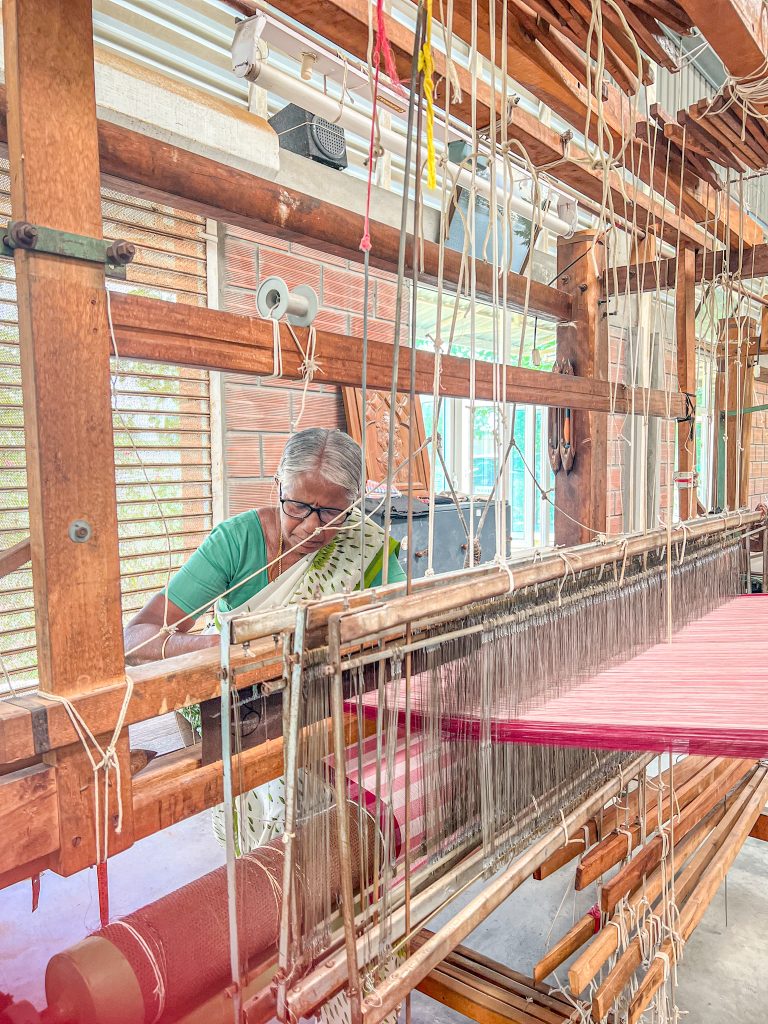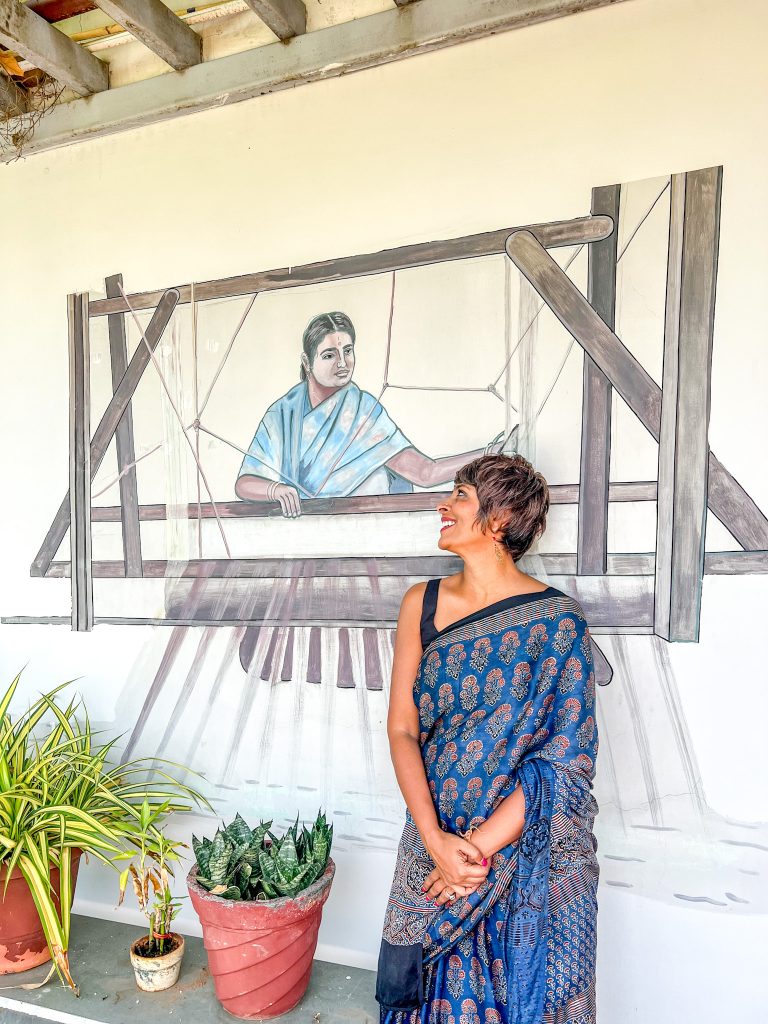The regenerative runway.
By Aparna Sharma
India has many different weaving and slow fashion clusters, from Kashmir to Kanyakumari. There are around 136 different styles of weaving in India, and some intricate weaving can take more than a month for just one sari. However, with the rise of fast fashion and power mills, the demand for handlooms has started going down. To address this, in the last few decades, many fashion designers and social entrepreneurs have been empowering artisans and working towards reviving the handloom sector.
Five P Venture and Nool By Hand are two such companies who are transforming the industry. I recently traveled to Erode to meet Bharati Devarajan, the CEO of both these companies. A dedicated social entrepreneur who is committed to improving the livelihood of weavers in Erode, she’s also a mother to a young daughter – of special significance to me because it was so delightful to see her commitment to creating a better world for her daughter. As I sat to chat with her, we were joined by her husband and Executive Director, Mano Ranjan. I was curious to understand what made them start this extremely challenging business. Both of them spoke about their common passion to build a social enterprise to help many talented artisans and weavers, all of whom are an integral part of India’s rural economy, and who have been struggling due to the rise of power mills and fast fashion.
Their main aim, they tell me, is to show people that a sustainable way of consumption is possible. “We do this through our responsible production process and sharing the traceability and transparency at every step of their supply chain,” they tell me. “We are committed to improving the lives of the people who work for us, and building a circular economy through our sustainable manufacturing process.”
THE ISSUES AND SOLUTIONS
Bharati and Mano walked me through the struggles of slow fashion, which employs and empowers weavers and artisans. For example, a handwoven cotton sari costs anywhere between THB 800 to THB 1,500 compared to a powerloom sari, whose costs can be as low as THB 150. Despite this price difference in the final product, a worker can earn more money in a powermill.
Some weavers feel that it’s a struggle to make money by weaving and opt for going to work in powermills, which has a different set of challenges. Five P Ventures is trying to address these issues and are working towards getting more export orders for handlooms, which enables them to hire more weavers and pay them a fair price for their work.
The issue is that fair prices are not established by the government, and very often, big brands want handlooms at a very low cost and they continue to squeeze and negotiate to a point which does not help the weavers.
In order to empower weavers and build a stronger and more resilient slow fashion economy, the fashion industry desperately needs a makeover; even fast fashion has to become slower to enable slow fashion to grow. Industry leaders must come together to make better laws for slow fashion, which is crucial to making fashion a force for good. As consumers, we can play a pivotal role by supporting weaving communities – we must visit them directly, and buy from them.
FIVE P VENTURE’S INITIATIVES
Five P Venture was started in 2012 with the aim of preserving the culture and heritage of India, and now has 20 weavers working in their handloom village. All their fabrics are woven by hand, using traditional and eco-friendly methods. While Bharti mentioned that she has seen an increase in consumers who are interested in eco- friendly products over the last few years because of the media attention slow fashion is receiving, real change at the grass root level is very slow and challenging.
Five P Venture are also experimenting with Regenerative Agriculture (RA) to grow the cotton they use for weaving. RA is an outcome-based food production system that nurtures and restores soil health, protects the climate and water resources and biodiversity, and enhances farms’ productivity and profitability.
THE WEAVING COMMUNITIES ACROSS INDIA
I’ve traveled extensively across Kutch and visited a few beautiful weaving communities near Varanasi earlier this year, and I’ve visited weaving communities across India. The common message I hear everywhere is to encourage people to be more aware of their fashion choices and support handloom communities as much as possible.
In one of his letters, Mahatma Gandhi mentions, “The handloom weaving is in a dying condition. Everyone admits that whatever may be the future of the mill industry, the handlooms ought not to be allowed to perish.” So many women and men like Bharati have fought to ensure that this industry does not perish and it is to their perseverance and credit that Indian handlooms still stand tall in an era of fast fashion.
I left with a smile on my face because we all agreed that we can see some changes in laws and regulations to promote handlooms. A lot of the groundwork for the solutions we discussed are already in the process, because there is more global attention on handlooms – and, in turn, slow fashion – due to climate change becoming a more mainstream conversation.








